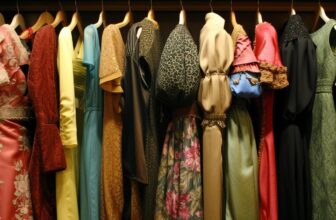
Celebrities With Negative Canthal Tilt
When it comes to facial aesthetics, the canthal tilt plays a significant role in determining a person’s overall appearance. The angle and direction of the outer corners of the eyes can greatly impact facial symmetry and attractiveness. In this article, we will delve into the concept of canthal tilt, particularly focusing on celebrities with negative canthal tilt, its characteristics, impact on facial aesthetics, and potential causes.
Canthal tilt refers to the angle formed by the junction of the upper and lower eyelids at the outer corner of the eye. The direction of this tilt can influence how open or squinted the eyes appear, consequently affecting the overall perception of an individual’s face.
A negative canthal tilt is characterized by a downward slanting angle at the outer corners of the eyes, which can create a somber or sad expression. Understanding these concepts is crucial in exploring their impact on beauty standards and social perceptions.
The importance of canthal tilt in facial aesthetics cannot be understated, as it plays a significant role in shaping an individual’s appearance. Negative canthal tilt has gained attention in both medical and cosmetic fields due to its influence on facial symmetry and overall attractiveness. In upcoming sections, we will examine how negative canthal tilt affects famous celebrities and explore potential causes for this particular facial feature.
Understanding Negative Canthal Tilt
Definition and Characteristics
Negative canthal tilt refers to the downward slant of the outer corners of the eyes. This creates a sad or tired appearance, regardless of an individual’s actual emotions. It is often characterized by a drooping or downturned outer eye corner, which can impact overall facial aesthetics.
Individuals with negative canthal tilt may experience dissatisfaction with their appearance, as it can affect their perceived attractiveness and youthfulness. The angle and position of the eyes play a crucial role in determining facial symmetry and harmony, making negative canthal tilt a concern for many people.
Celebrities With Negative Canthal Tilt
Several famous celebrities, including prominent actors and musicians, have been noted for their negative canthal tilt. For instance, Angelina Jolie is often cited as a celebrity with this feature. Despite her undeniable beauty, Jolie’s slightly downturned outer eye corners contribute to her enigmatic and sultry look. Similarly, Kristen Stewart also possesses a negative canthal tilt, adding depth to her gaze and overall allure on screen.
The presence of negative canthal tilt in these celebrities has not hindered their success in the entertainment industry. In fact, it has contributed to their unique charm and distinctive on-screen personas. Their striking appearances challenge conventional beauty standards and demonstrate that features like negative canthal tilt can be assets rather than flaws in the world of fame and glamour.
Impact on Overall Look
Negative canthal tilt has undoubtedly impacted the overall look of these celebrities. It has become an essential component of their signature style and public image. By embracing their unique facial features, these individuals have redefined standards of beauty in popular culture. With fans across the globe admiring them for their captivating performances and captivating looks, celebrities with negative canthal tilt have left an indelible mark on Hollywood’s perception of facial aesthetics.
Celebrities With Negative Canthal Tilt
Negative canthal tilt is a facial feature that has garnered attention in the world of aesthetics, particularly within the entertainment industry. This unique characteristic refers to the downward slant of the outer corner of the eyes, often giving a sad or droopy appearance to the eyes. While negative canthal tilt does not necessarily indicate any health concerns, it can significantly impact overall facial symmetry and attractiveness.
Celebrities are often held to high standards when it comes to their appearance, making negative canthal tilt a noticeable feature for some famous individuals. Here are some well-known personalities who possess this distinct facial trait:
- Bella Hadid: The supermodel has been open about embracing her natural features, including her negative canthal tilt. Despite unconventional beauty standards, Bella Hadid’s unique look has contributed to her success in the fashion industry.
- Mila Kunis: Known for her roles in various films and television shows, Mila Kunis also exhibits a negative canthal tilt. This distinctive feature has become part of her signature look and has not hindered her successful career in Hollywood.
- Jaden Smith: Revealing his own struggles with confidence and self-acceptance, Jaden Smith is another celebrity with negative canthal tilt. As an actor and musician, he has been praised for his individuality and ability to embrace his natural appearance.
These examples demonstrate that celebrities with negative canthal tilt have managed to thrive in their respective fields despite societal beauty standards. Their success serves as an inspiration for individuals who may feel insecure about their unique facial features.
It is important to note that while popular culture may uphold certain beauty ideals, embracing diversity in physical characteristics ultimately contributes to a more inclusive and accepting society. Remember that beauty comes in all forms and should be celebrated rather than conforming to narrow standards portrayed by mainstream media.
Potential Causes of Negative Canthal Tilt
Negative canthal tilt, also known as downslanting eyes, can have various causes that contribute to the overall appearance of an individual’s facial structure. One potential cause of negative canthal tilt is genetic predisposition. Certain individuals may inherit the trait of downward slanting eyes from their parents or ancestors, leading to this characteristic in their facial features.
In addition to genetic factors, facial trauma or injury can also result in negative canthal tilt. Accidents or injuries involving the eye area or the surrounding bones can disrupt the natural positioning of the eyes and contribute to a downward slanting appearance. Such trauma can impact the muscles and tissues around the eyes, leading to a change in their orientation and creating a negative canthal tilt.
Furthermore, aging effects on facial structure can play a role in the development of negative canthal tilt. As individuals age, changes in skin elasticity and muscle tone can influence the position and angle of the eyes, resulting in a downward slant over time. These natural aging processes can contribute to alterations in facial aesthetics, including the presence of negative canthal tilt.
| Causes | Description |
|---|---|
| Genetic Predispositions | Inherited traits from parents or ancestors |
| Facial Trauma or Injury | Accidents affecting eye area or surrounding bones |
| Aging Effects on Facial Structure | Natural changes in skin elasticity and muscle tone with age |
Impact of Negative Canthal Tilt in Hollywood
Negative canthal tilt is a facial feature that has been the center of attention, especially in the world of Hollywood and the entertainment industry. Many famous personalities are known for having this distinctive facial characteristic, which has sparked discussions about its impact on their overall appearance and career. Here are some well-known celebrities with negative canthal tilt and how it has influenced their public image.
Celebrities With Negative Canthal Tilt
One notable celebrity with negative canthal tilt is actress Megan Fox. Known for her captivating eyes and sultry look, Fox has a slightly downward sloping outer corner of her eyes, giving her a unique and alluring gaze. This feature has become one of her trademark attributes, contributing to her on-screen allure and off-screen persona.
Another celebrity with negative canthal tilt is actor Keanu Reeves. His distinctively melancholic eyes have been a subject of fascination among fans and critics alike. Reeves’ negative canthal tilt adds depth to his intense and enigmatic on-screen presence, further solidifying his status as a versatile and captivating actor.
Actress Angelina Jolie is also recognized for her negative canthal tilt, which imbues her with an enigmatic and exotic allure. Jolie’s captivating gaze and mysterious appeal have played a significant role in shaping her public image as a charismatic and powerful figure both on and off the screen.
These examples demonstrate how negative canthal tilt has contributed to the unique looks and identities of these celebrities, highlighting its influence in shaping their public image and career trajectory in Hollywood.
Impact on Career
The impact of negative canthal tilt extends beyond physical appearance, influencing casting decisions and typecasting in Hollywood. Celebrities with this distinctive feature often embody specific character archetypes that align with the mysterious or alluring qualities associated with their eye shape. This can lead to certain roles being tailored specifically for them, ultimately affecting the direction of their careers within the entertainment industry.
Furthermore, negative canthal tilt contributes to the portrayal of complex emotions on screen, allowing actors to convey depth and intensity through their gaze. As such, this facial characteristic plays a crucial role in the creative expression and performance style of these celebrities, enhancing their ability to captivate audiences with nuanced portrayals.
Surgical and Non-Surgical Options for Canthal Tilt Correction
There are several surgical and non-surgical options available for individuals looking to correct negative canthal tilt. These procedures aim to improve facial symmetry and overall appearance, addressing the impact of canthal tilt on a person’s look. Below are some common cosmetic procedures used to correct negative canthal tilt:
- Canthoplasty: This surgical procedure involves altering the position of the outer corner of the eye to adjust the canthal tilt. It is often used to create a more upward or downward slant, depending on the desired aesthetic outcome.
- Botox Injections: Non-surgical options such as Botox injections can be used to temporarily improve negative canthal tilt. By injecting Botox into specific areas around the eyes, it is possible to lift or lower the outer corner, creating a more balanced and symmetrical appearance.
- Dermal Fillers: Another non-surgical option for correcting negative canthal tilt is through the use of dermal fillers. By strategically injecting fillers around the eyes, a skilled practitioner can adjust the canthal angle and improve facial harmony.
It is important to note that both surgical and non-surgical options come with their own set of risks and benefits. Individuals considering these procedures should consult with a board-certified plastic surgeon or dermatologist to discuss their goals, expectations, and determine which option would be best suited for their needs.
Ultimately, whether choosing surgery or non-surgical interventions, it is essential for individuals with negative canthal tilt to seek professional guidance from qualified practitioners who specialize in facial aesthetics and understand the intricacies of correcting canthal tilt. With proper care and attention, individuals struggling with negative canthal tilt have access to effective solutions that can positively impact their overall appearance.
Cultural and Social Perceptions of Canthal Tilt
Negative canthal tilt, although often considered a flaw in traditional beauty standards, has not hindered the success and impact of several prominent celebrities. One such example is actress Kristen Stewart, known for her roles in the Twilight series and other films.
Stewart’s unique facial features, including her negative canthal tilt, have contributed to her signature look and edgy appeal. Despite any societal pressure to conform to conventional beauty standards, she has embraced her distinct features and carved out a successful career in Hollywood.
Another well-known celebrity with negative canthal tilt is actor Joaquin Phoenix. His captivating performances on screen have solidified him as one of the industry’s most respected talents, despite not fitting the typical “leading man” aesthetic.
Phoenix’s rugged appearance, complete with his negative canthal tilt, has become part of his brand as an actor known for deep and transformative portrayals. Despite any potential challenges related to his facial features, he has risen to critical acclaim and garnered numerous accolades throughout his career.
Supermodel Bella Hadid is also recognized for her striking beauty featuring a negative canthal tilt. Her unconventional look has defied traditional expectations in the fashion industry, where she has thrived as a sought-after model.
Hadid’s unique facial structure and negative canthal tilt have set her apart from others in her field, leading to widespread recognition and success in the highly competitive world of modeling. These celebrities serve as powerful examples of embracing individuality and challenging societal norms within the entertainment and fashion industries.
Tips for Embracing Canthal Tilt
Negative canthal tilt is a facial feature that has garnered attention in the world of beauty and aesthetics. It refers to the downward slant of the outer corner of the eyes, which can affect facial symmetry and overall appearance. While some individuals may opt for cosmetic procedures to correct this feature, there are several celebrities who have embraced their negative canthal tilt and have made it a part of their unique look.
One famous celebrity known for her negative canthal tilt is Mila Kunis. The actress has been open about her unique facial features and has even embraced them as part of her trademark look. Despite societal beauty standards, Kunis has demonstrated confidence in her appearance, showing that negative canthal tilt does not need to be seen as a flaw.
Similarly, actress Lily Collins also has a noticeable negative canthal tilt. Rather than seeing it as a hindrance, Collins has used her distinct features to carve out her own identity in Hollywood. Her striking appearance has set her apart in the entertainment industry and has become an essential part of her on-screen presence.
In addition to these celebrities, many others have chosen not to undergo corrective procedures for their negative canthal tilt, instead embracing it as part of what makes them unique. This shift toward celebrating individuality and diverse facial features challenges traditional beauty standards and encourages inclusivity in the entertainment industry and beyond.
| Celebrity | Impact |
|---|---|
| Mila Kunis | Demonstrated confidence in appearance |
| Lily Collins | Used distinct features as part of identity |
Conclusion
In conclusion, the impact of canthal tilt in facial aesthetics is undeniable. Negative canthal tilt can significantly affect facial symmetry and overall appearance, and this has been evident even in famous celebrities. Despite the potential challenges posed by negative canthal tilt, it is important to embrace and celebrate diversity in facial features and beauty standards.
While some celebrities have chosen surgical or non-surgical options to correct their negative canthal tilt, it is essential to recognize that there are beauty and styling tips that can enhance and showcase the unique features associated with this characteristic. It’s crucial to empower individuals with negative canthal tilt to embrace their natural beauty and feel confident in their own skin.
Ultimately, the cultural and social perceptions of canthal tilt may vary, but it is important to promote inclusivity and acceptance of diverse facial features. The entertainment industry plays a significant role in shaping beauty ideals, but as society continues to evolve, there is an increasing recognition of the importance of embracing individual differences. By celebrating diversity in facial aesthetics, we pave the way for a more inclusive and empowering environment for all individuals, including celebrities with negative canthal tilt.



